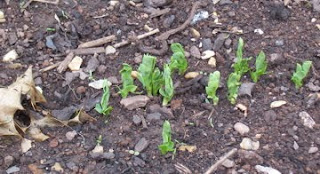
The last months have seen me on all fours examining the soil in our garden, in particular in the raised beds. It is indeed teeming with soil life and as a result the plants grown in it seem to be healthy.
My initial gardening efforts were childish, in that I really did believe that sticking seeds in the soil would give me great beans, cauliflowers and courgettes. My children have over the years come home with a bean plant in a cup and not surprisingly 2 out of 3 have died through neglect. This exercise is given to them to establish what plants need to reach their optimum potential.
So it is with humans. We have a finite life, start of as seedlings that need nurturing and as to whether we reach our optimum potential is going to depend in what soil we stand and what growing conditions we find along the growing seasons.
Global warming will create challenges of sorts that will be beyond our control as a result of decades of using fossil fuel energy and every positive action we can create to counteract the possible effects of that on our growing medium in the garden can only reap benefits.
Permaculture helps to create a synergy between the growing cycles and in Gaia’s Garden by Toby Hemingway a whole chapter is dedicated to the building of soil life. We have the initial elements of creating compost and mulching the beds with compost but he also suggests sheet mulching. So lets see if in this garden we can harnass the creative energies of soil life to the benefit of all.
Sheet mulching starts off with a layer of cardboard and is topped with about 30 cm of organic compost. If you do this in autumn, the mulch will rot over winter. We have an area that currently hosts but weeds and over the next weeks I am going to give this method a try which will give me a comparison to a raised bed. I will grow the same plants in it over the season and we shall see what results we get.
Ingredients needed are :
- cardboard, old clothing, newspapers
- lime, rock phosphate,bonemeal, rock dust, kelp meal and blood meal
- straw, hay, leaves, seaweed, ( 1 strawbale in my case)
- 2 feet of compost
- a layer of rotted manure
- topping of straw, woodshavings, seagrass
By composting in place the soil organisms are not disturbed and an intact subterranean ecology develops. Its worth a go and perfect for an autumn project.
First I need to do some networking and go for walks on the beach to find some ingredients.
Pictures to follow.
No comments:
Post a Comment